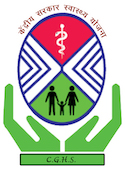Myasthenia Gravis (my-uh-sti-nee-uh jye-vrus) is a disorder that affects communication between the nerve and muscle. More specifically, it involves defects in the part of the nervous system that sends messages from your brain to your muscles telling them when to work. As a result, muscles fatigue easily and often weaken, leading to reduced physical function. Here we will discuss the disease first and later on about the Ayurvedic Treatment of Myasthenia Gravis.
What Causes Myasthenia Gravis?
While the cause of Myasthenia Gravis is unknown, researchers believe it may be caused by autoantibodies directed against nicotinic acetylcholine receptors (nAChR). This leads to the destruction of nAChRs resulting in varying degrees of muscle weakness.
How is Myasthenia Gravis Diagnosed?
Because there are a number of conditions that can lead to symptoms similar to those of Myasthenia Gravis, it may be difficult for your doctor to make the diagnosis. The diagnostic process typically involves taking a patient history and conducting a thorough physical examination, followed by additional testing. If you or your family have a history of autoimmune disorders such as Graves Disease (hyperthyroidism) or Sjogren’s Syndrome, this could be suggestive of an underlying condition called an autoantibody-induced myasthenic syndrome. Your doctor may order tests to check for acetylcholine receptor antibodies (AChR). We recommend in few cases for genetic testing to help pinpoint the cause of your Myasthenia Gravis.
What are the Signs and Symptoms of Myasthenia Gravis?
The following are the most common signs and symptoms of Myasthenia Gravis:
Fatigue or Exhaustion
The hallmark symptom of MG is extreme fatigue. This occurs when the muscle weakness in the body becomes so severe that it interferes with sleep, exercise tolerance or other daily activities. Typically, patients complain of excessive tiredness or a feeling of exhaustion that does not improve regardless of how much rest they get. While some people describe their fatigue as feeling like they have the flu, others feel anxious about being fatigued and may be irritable because they cannot perform tasks that used to be easy or take part in social activities such as visiting friends or going to parties. In addition, people with MG often experience trouble sleeping at night. This happens because of weakness and fatigue in muscles.
Problems Talking
Due to weakness of the muscles that control speech, patients with MG often experience difficulty finding the right words or may slur their speech when speaking in front of a large group of people. Although some patients have mild problems with stuttering or slurring their speech at times, others experience severe difficulty communicating, especially in noisy environments, such as restaurants where background noise can interfere with understanding. This is because our ability to understand what other people say depends not only on how they speak but also on subtle cues like facial expressions and body language.
Noisy Muscle Cramps or Twitches
Cramping in the fingers is common during sleep for patients with severe MG. However, people who have milder forms of the disease may complain that their legs feel stiff and fatigue easily while walking around. Occasionally, you may experience sudden muscle contractions called “twitches,” which may occur in your face (making it look like you’re chewing), arm/legs (causing a jerking motion) or even your voice box (causing a change in pitch).
Easily Fatigued
Because the body’s ability to function is dependent upon adequate amounts of acetylcholine, people with MG are often more tired than their peers. This can be especially debilitating for teenagers and young adults who may go through a period where they sleep excessively during the day but are unable to stay asleep at night because they’re so fatigued.
In addition, when it comes time for these patients to wake up in the morning or before a big test or exam, they may have difficulty rousing themselves from sleep since their muscles are weak and require energy to move.
Sleep Disturbances
Difficulty sleeping is one of the most common complaints from patients with MG. Muscle aches and cramping can wake people up at night, causing them to experience disturbed sleep. Additionally, some patients have problems falling asleep due to anxiety caused by fatigue or mental stress that makes it hard for them to unwind when they go to bed.
What are the Symptoms of Myasthenia Gravis on the Eyes?
Myasthenia gravis symptoms can affect the eyes in different ways. For example, some patients have difficulty opening their eyelids or focusing on objects that are close to them, while others experience double vision. Other manifestations include:
Blurred vision
Trouble with reading or recognizing faces
Dry eyes and dry mouth (due to excessive blinking)
Ptosis in Myasthenia Gravis
Myasthenia gravis ptosis is the most common sign of the disease and can occur either unilaterally or bilaterally. Ptosis in myasthenia gravis patients involves a drooping eyelid that does not respond to increased pressure around the eye. This phenomenon often makes it difficult for these patients to open their eyes, so they usually prefer to keep them closed most of the time.
Ptosis at rest means that the affected eyelid is always partially closed even when you are not using your muscles to help to keep them open. It may be worse after activity, such as chewing, speaking or simply moving your head from side to side.
Diplopia in Myasthenia Gravis
Double vision (diplopia) in patients with myasthenia gravis is usually worse when you look at objects that are close to your face, especially if these objects move. This symptom can make it difficult for a patient to read and recognize faces. It can also interfere with tasks that require good depth perception and judgment such as driving or playing sports.
Ayurveda about Myasthenia Gravis
Ayurveda is a holistic system of medicine and therefore considers treating the underlying causes of myasthenia gravis, rather than just its symptoms. As per Ayurveda, there are seven basic tissues – dhatus or dhātṛi. These include blood, lymph, muscle, bone, fat, bone marrow and semen. The complete treatment of myasthenia gravis involves treating these tissues individually.”
The Ayurvedic view on Myasthenia gravis: What is it and the causes?
Ayurveda, a comprehensive system of medicine that treats diseases at their root level. Ayurveda states that Myasthenia Gravis (MG) is caused by impairment of the Agni fire in the body which leads to accumulation of ama, or toxins. Suppression of the Agni further results in aggravation of Pitta dosha along with Vata and Kapha doshas.
The Ayurvedic Treatment for Myasthenia Gravis: How does it work?
Ayurvedic treatment of myasthenia gravis includes panchakarma therapy which involves giving medicines that increase the Agni fire in patients with moderate to severe MG. It also includes therapies like Vajonighati and virechan which help in getting rid of ama so as to stimulate the agni. They also involve performing medicated enemas that can reduce constipation.
The Ayurveda recommends panchakarma as the most effective treatment for myasthenia gravis. Virechan, on the other hand, is also beneficial but does not have a long-lasting effect if patients stop doing it after recovery, as they avoid medicines and take only juices. This results in aggravation of doshas again which leads to relapse of symptoms. Hence, panchakarma is recommended as the best option.
The Multidimensional approach of Ayurvedic Treatment for Myasthenia Gravis
There are 5 components involved in MG treatment –
(1) Panchakarma (5 stage detoxification), Rasayana Therapy, Classical Ayurvedic drugs, Yogic treatment and Diet therapy.
(2) The main treatment for MG in Ayurveda is Rasayana medicines like Ashwagandha, Brahmi as they work to enhance the Agni fire or metabolic system.
(3) Ayurvedic drugs like Mansarohini, and Kalpa Taila work to detoxify the accumulated ama or toxins from the body.
(4) Herbal supplements like Brahmi capsules, Ashwagandha tablets and other Rasayana medicines helps to enhance the Agni or metabolism.
(5) Classical Ayurvedic treatments like Pancha Karma detoxifies and rejuvenates of the body to support the healing process. The dosha balancing therapies balance all the three doshas – Vāta, Pitta, and Kapha inside the body. After which Ayurvedic drugs help in quicker recoveries during treatment.
(6) Yoga and Pranayama work in reducing stress which is mainly caused due to brain involvement in this disease. Stress reduction helps in improving the strength of muscles.
What Patients Need to Consider While Taking Panchakarma Treatments?
According to Ayurveda, the entire body along with its mind-body components should be taken into consideration during Panchakarma therapy. The factors that can affect the vāta dosha like vitiated pitta, aggravated Kapha, hormonal imbalances or tension aggravate Myasthenia Gravis (MG). All these factors should address before giving any medications or performing any therapy. Panchakarma therapies ensure that all the three doshas come in balance inside the body before giving any medications or starting any medications.
The Ayurvedic treatment depends on keeping a close watch of the accumulated toxins in the body and hence detoxifying therapy eliminates these toxic build-ups. The five major components of this disease – vāta, pitta, Kapha, ama (toxins), and Agni (digestive fire) have to be taken into consideration during treating MG.
You can consult with Vaidya Pardeep through online consultation for the Myasthenia Gravis.













